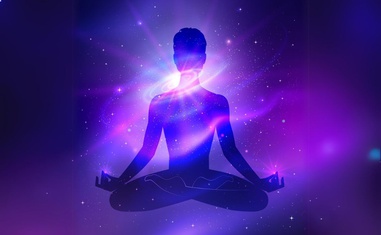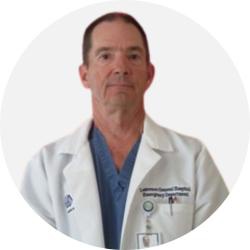The views expressed in our content reflect individual perspectives and do not represent the authoritative views of the Baha'i Faith.
As a retired emergency medicine physician, I hold two key Baha’i principles close to my heart and my head: First, science and religion agree; and second, healing can be both physical and spiritual.
The First Principle: Science and Religion Agree
Science and religion must be in harmony, as their natures and observations about reality are complementary, although not identical.
This Baha’i principle — the essential harmony of science and religion — is based on the truth that there is only one physical reality, although science and religion are fundamentally different lenses through which we can view that one reality. This means, to me, that religion and science cannot put forth concepts in radical disagreement. (Here, I am here purposefully setting aside the theoretical concept of a multiverse, which frankly gives me a headache to try to wrap my brain around!)
RELATED: Embracing the Baha’i Principle of Harmony Between Science and Religion
In his thought-provoking book “Rocks of Ages: Science and Religion in the Fullness of Life,” the evolutionary biologist Stephen Jay Gould addresses the science/religion dichotomy with the concept that science and religion are “non-overlapping magisteria” (which he terms NOMA) that need to keep their respectful distances from each other. Both science and religion, according to Gould’s book, have different realms of expertise:
Science tries to document the factual character of the natural world, and to develop theories that coordinate and explain these facts. Religion, on the other hand, operates in the equally important, but utterly different, realm of human purposes, meanings, and values — subjects that the factual domain of science might illuminate, but can never resolve.
On this same topic, Abdu’l-Baha said, “If any religion rejected Science and knowledge, that religion was false. Science and Religion should go forward together; indeed, they should be like two fingers of one hand.”
In an interesting echo of Abdu’l-Baha’s comment, the famed physicist Albert Einstein, some years later, said, “Science without religion is lame, religion without science is blind.” This is not to say that Einstein believed in a “personal God,” which, by report, he stated emphatically that he did not, referring to such beliefs as “naïve” and “childlike.” He did, however, elaborate by also saying:
The most beautiful and deepest experience a man can have is the sense of the mysterious. It is the underlying principle of religion as well as of all serious endeavour in art and science. He who never had this experience seems to me, if not dead, then at least blind. To sense that behind anything that can be experienced there is a something that our minds cannot grasp, and whose beauty and sublimity reaches us only indirectly and as a feeble reflection: this is religiousness. In this sense I am religious. To me it suffices to wonder at these secrets and to attempt humbly to grasp with my mind a mere image of the lofty structure of all there is.
Abdu’l-Baha’s comment, which preceded Einstein’s by many years, pointed out that:
The difference in station between man and Divine Reality is thousands upon thousands of times greater than the difference between vegetable and animal. And that which a human being would conjure up in his mind is but the fanciful image of his human condition, it does not encompass God’s reality but rather is encompassed by it.
Although I see a distinct parallel between their descriptions above of “all there is,” the Baha’i conception of God does differ dramatically from that of Einstein’s. Abdu’l-Baha provides reassurance that “… God is affectionate, compassionate and merciful.”
The Second Principle: The Independent Investigation of the Truth.
Abdu’l-Baha explained the primary Baha’i principle of the independent investigation of the truth this way:
God has bestowed the gift of mind upon man in order that he may weigh every fact or truth presented to him and adjudge whether it be reasonable. That which conforms to his reason he may accept as true, while that which reason and science cannot sanction may be discarded as imagination and superstition, as a phantom and not reality.
In terms of our health, this principle becomes most powerful when paired with Baha’u’llah’s guidance to “accept and comply” with “whatever competent physicians or surgeons prescribe.” The two together combine the benefits of both science and spirituality and can optimize both physical and interpersonal and spiritual healing.
Science, especially the science of medicine, increasingly recognizes the impact of the human spirit on healing.
One of the best descriptors of that truth is the placebo effect. Herbert Benson’s description of the placebo effect, as outlined in his 1996 article, is surprisingly consistent with statements made by Abdu’l-Baha in 1906. Benson proposed that the following were needed for placebo-effect healing to work: positive beliefs and expectations on the part of the patient; positive beliefs and expectations on the part of the physician or health care professional; and a good relationship between both parties.
Abdu’l-Baha’s historically earlier comments, from his 1906 book “Some Answered Questions,” were:
In brief, a complete and perfect connection between the spiritual physician and the patient — that is, one where the physician concentrates his entire attention on the patient and where the patient likewise concentrates all his attention on the spiritual physician and anticipates healing — causes a nervous excitement whereby health is regained. But this is effective only to a point and not in all cases. For instance, should someone contract a grave illness or be physically injured, these means will neither dispel the illness nor soothe and heal the injury — that is, these means have no sway over grave illnesses unless assisted by the constitution of the patient, for a strong constitution will often ward off an illness.
Although the language varies slightly, the described three-step process sounds otherwise identical, with Abdu’l-Baha’s statement preceding Benson’s by 90 years.
RELATED: Science and Religion: Can They Work Together?
One could say that this is just a simple coincidence — that an unusual phenomenon was separately stumbled upon by two different individuals at two different times in history. Consider, though, that these individuals were radically different in their upbringing, education, and goals in life. I favor the explanation that Abdu’l-Baha — who had just one year of formal schooling at age seven — was the recipient of divine inspiration to reveal this concept, while Benson learned it through long science-based education and hard work.
This essay is adapted from the final chapter of Dr. Remignanti’s recent book ”The Healing Connection: A Partnership for Your Health,” and only represents a fragment of what the book presents as a prolonged science-based argument for the enduring importance of the patient-physician relationship — one emphasized repeatedly in the Baha’i teachings. The book can be ordered here.

















Comments
Sign in or create an account
Continue with Facebookor